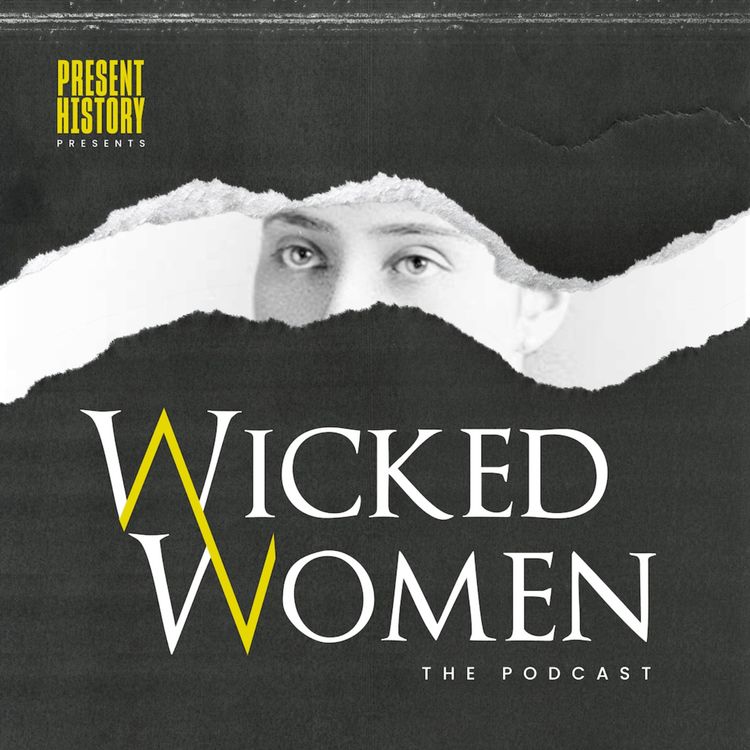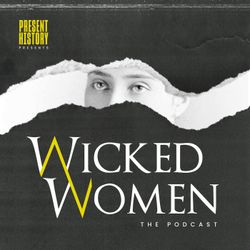Share

Wicked Women: The Podcast
Madame du Barry
The mistresses of the French kings are some of the most iconic and recognizable. Madame de Pompadour, Agnès Sorel, Madame de Montespan, Madame de Maintenon, Diane de Poitiers. These are just a few of the hundreds of women who came to dominate the French court. In many cases they all shared a similar background; daughters of minor nobility who knew the ways of a royal court and played their parts accordingly. However, in the waning years of the French monarchy, one woman scandalized the French court by coming not from the nobility but from the working class. Jeanne Bécu, later known as Madame du Barry was a self-made woman who achieved wealth and infamy by supposedly rising from a brothel to King Louis XV’s bed. Depicted both during her lifetime and after as a vulgar, social climbing courtesan, Madame du Barry has rarely gotten a fair depiction. However, when truly analyzed, what she was able to achieve by the age of 25 is nothing less than astonishing.
Featured Guest: Dr. Christine Adams, a historian, and author that focuses mainly on French family and gender history. Christine is the co-author of the book The Creation of the French Royal Mistress: From Agnès Sorel to Madame DuBarry.
More episodes
View all episodes

14. Cecily Neville
55:16||Season 4, Ep. 14She was called proud. Ambitious. Dangerous. Born a duchess, widowed by war, and mother to two rival kings, Cecily Neville moved through England’s most treacherous century with the calm precision of a strategist. While men fought for thrones, she fought for legacy. Some saw her as the cold matriarch who helped ignite the Wars of the Roses, a woman willing to brand her own grandsons illegitimate to protect her favorite son’s claim. Others saw a survivor. Pious, dignified, and unbroken, even as her family destroyed itself in pursuit of power. Was she a mother or a monarch in disguise? The line between the two has never been clear.Today, I’m speaking with Annie Garthwaite, author of The King’s Mother, a powerful new novel (and second in her series) that reimagines Cecily’s later years. Years often dismissed or forgotten by history. We talk about how Cecily navigated the dangerous politics of York and Lancaster, how her reputation was shaped by those who feared women’s influence, and what it means to reclaim a voice history tried to silence.
13. Women Who Ruled the World
52:13||Season 4, Ep. 13What do Elizabeth I of England, Maria Theresa of Austria, Tamar of Georgia, Liliʻuokalani of Hawaii, and the Nawab Begums of Bhopal have in common? Seemingly very little. They are divided by time, language, religion, culture, and family circumstances. But what binds them together is that all reigned as queens in their own right. Women who claimed power in a world that rarely allowed it.In her latest book, Women Who Ruled the World, historian Dr. Elizabeth Norton takes us across 5,000 years of history to uncover the extraordinary stories of female monarchs. From Merneith, who ruled Egypt nearly five millennia ago, to Elizabeth II, who became the world’s longest-ruling woman, Dr. Elizabeth Norton shows how rare and remarkable it was for a woman to seize the throne and what it meant when she did. These queens were warriors, diplomats, and visionaries, often standing as the only woman in the room, defying expectations and reshaping history. Today, Elizabeth joins me to discuss how these women not only ruled their nations, but challenged the very idea of power itself.
12. Victoria Woodhull
58:31||Season 4, Ep. 12A suffragist, a spiritualist, a stockbroker, an author, and in 1872, the first woman to run for president of the United States, Victoria Woodhull was a visionary who defied expectations. But her legacy is complicated. Her advocacy of “free love” and willingness to challenge Victorian norms made her infamous in her own time. Her clashes with leading suffragists and her scandalous run ins with the law left her branded as dangerous, even immoral. For decades afterward, she was written out of mainstream histories, remembered more for controversy than for courage.Now, Eden Collinsworth’s new book, The Improbable Victoria Woodhull, offers a fresh take. In today’s episode, we’ll explore Woodhull’s story and how this new biography helps us see her not just as a heroine or a villain, but as a woman whose choices and contradictions still have something to teach us today.Content Warning: The topics covered in this episode may not be suitable for all audience. Listener discretion is advised.
11. Reading Women Through Portraits
57:23||Season 4, Ep. 11In today’s episode, I’m joined by Gemma Haigh, now known to many as The Plant Parlour (where she champions cultivating lush botanical spaces), but who first made her mark as curator and researcher on the exhibition Georgian Women: Female Portraits by John Russell RA. During that project, she researched 19 female portraits in Guildford Heritage’s acclaimed Russell collection, interrogating how Russell’s pastel portraits of daughters, wives, and social figures both reflected and resisted gendered expectations in Georgian Britain.Gemma guides us through the power dynamics embedded in pastel and paint: how Russell’s art objectified and elevated his sitters; what it says about the male gaze and elite femininity; and how those images gain new meaning when reinterpreted through a feminist lens today. We discuss how modern viewers can learn to read these portraits with fresh eyes and explore what their stories reveal about identity, visibility, and portraiture as a form of social control.
10. Story of a Murder: Discussion with Hallie Rubenhold
54:46||Season 4, Ep. 10On July 13, 1910, on a quiet suburban street in Camden Town, London, a grisly discovery shattered the illusion of domestic peace. Beneath the floorboards of 39 Hilldrop Crescent, the dismembered remains of music hall performer Belle Elmore were unearthed. The Victorian house, prim, respectable, and unassuming, had become the scene of one of the most sensational murders in British history.As the press descended, the story gripped the world. Belle’s husband, the mild-mannered doctor Hawley Harvey Crippen, and his lover, the demure and seemingly obedient Ethel Le Neve, had vanished, fleeing across the Atlantic in disguise. It was the first time in history that wireless telegraphy would be used to capture fugitives in real time. Their arrest aboard the Montrose, just before reaching Canada, turned the case into a media spectacle of unprecedented scale. London newspapers dubbed it “The Crime of the Century.”But behind the headlines lies a much more complicated story, one shaped by gender, class, performance, and power.In today’s episode of I’m joined by award-winning historian Hallie Rubenhold, author of the book Story of a Murder: The Wives, The Mistress, and Dr. Crippen. In our discussion we focus on the two women most deeply entangled in this tale: Belle Elmore, and Ethel Le Neve. This isn’t just a story about murder. It’s about who gets to be remembered, who gets vilified, and how history treats women who refuse to conform.Disclaimer: This episode discusses topics that may not be suitable for all audiences. Viewer discretion is advised.
9. Margaret More Roper
58:43||Season 4, Ep. 9Today, we journey back to Tudor England to meet a woman whose story has been overshadowed by the fame—and fate—of her father, Sir Thomas More. But make no mistake: Margaret More Roper was no mere footnote in his legacy. She was a scholar, a writer, a translator, and one of the most educated women in all of Europe at a time when women were expected to remain silent and obedient.Margaret was fluent in Latin and Greek, corresponded with Erasmus, and dared to question the boundaries placed on her intellect and her loyalty. While the men around her wielded power through politics and the church, Margaret wielded hers through the pen—and through her fierce devotion to truth, family, and justice. In a world that demanded quiet submission, Margaret More Roper spoke with a clarity and courage that still echoes centuries later.In this episode, I discuss the fascinating but often overlooked legacy of Margaret More Roper with Aimee Fleming, a historian and author of the book The Female Tudor Scholar and Writer: The Life and Times of Margaret More Roper.Source: Journey in the New World by Twin Musicom is licensed under a Creative Commons Attribution 4.0 license.
8. The Legend of Lilith
51:04||Season 4, Ep. 8A she-demon who devours children.A seductress who visits men in their sleep.The first wife of Adam, cast out of Eden for defying him.A feminist icon reclaimed by modern movements.Lilith is all of these and more—a figure woven from strands of ancient mythology, religious texts, folklore, and contemporary reimaginings. Her name echoes across millennia, from Sumerian incantations and Jewish mysticism to Renaissance art and feminist literature. But with so many identities layered over her, who—or what—was Lilith to begin with?In today’s episode, I’m joined by Nikki Marmery, author of the thought-provoking novel Lilith. Together, we delve into the rich and mysterious legend of Lilith—a figure who has been reimagined across generations as a demon, a seductress, a rebel, and a symbol of female empowerment. We explore how her story has evolved through ancient texts, folklore, and literature, and how these shifting interpretations continue to resonate today.Disclaimer: This episode discusses topics that may not be suitable for all audiences. Viewer discretion advised.
7. Portraits of Groundbreaking Women
42:37||Season 4, Ep. 7Original Sisters, a stunning collection of 154 portraits, reclaimed the lives and faces of groundbreaking women from history. In today’s episode I’m in discussion with the book’s author and artist, Anita Kunz. We discuss the project that was born in the midst of the COVID-19 pandemic shutdowns and Anita’s process of bringing these women vividly to life. Anita's work is currently on display at the Norman Rockwell Museum in Massachusetts until May 26, 2025. Important Links: OriginalSisters.comhttps://www.nrm.org/2024/09/anitakunz/
6. Judy Blume
39:52||Season 4, Ep. 6“I never planned to become an activist but things happen. You either take action or you don’t. Standing up and speaking out for what you believe in—well, it feels a lot better than doing nothing. And while you’re doing it, you find out you’re not as alone as you thought you were.” Judy Blume Judy Blume’s books such as Are you there God? It’s me Margaret, Forever, and Iggie’s House have become a standard for many young American readers since their publications in the 1970s. Breaking the bounds of what were acceptable topics for young readers, Judy Blume changed the face of what would become known as the Young Adult genre. In todays episode I’m joined by author Rachelle Bergstein as we discuss America’s most banned author of the 1980s and Rachelle’s latest book The Genius of Judy: How Judy Blume Rewrote Childhood For All of Us.